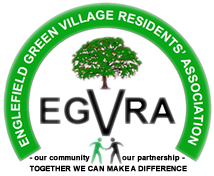Brief History of Sunningdale Park
Early History
Although there is little evidence of local Stone-Age settlements, the light and sandy soil lacked the flints used for tools, there are many Bronze-Age barrows in the area.
In Roman tomes the trees, heath and undergrowth covering Sunningdale formed part of Windsor Forest. The main highway to the west appears to have passed through and two Roman roads met nearby, but there is no trace of Roman settlements in Sunningdale itself although there were encampments in the surrounding areas.
Sunningdale probably derives its name from an Anglo-Saxon charter which links part of the area with the sons or family of Sunna.
At the time of the Domesday Survey in 1086 Sunninghill apparently formed part of the valuable Manor of Cookham, known as Cochela, in the Berkshire hundred of Beynhurst which was held by Edward the Confessor.
Opposite the south side of the Park is the site of Broomhall Nunnery founded some time in the 12th century and disbanded in 1511. Broomhall Lane is the turn off from the A30 when approaching the Park from London.
Although there is evidence that a house (c1785) by James Wyatt existed at Sunningdale Park it is uncertain whether it was the one mentioned in the earliest recorded sale, in the early nineteenth century, to a Mr. James Stewart. This property, near the site of the present stables, passed to his brother the Reverend Charles Stewart, one time curate at Sunninghill who, about 1830, built a new house higher on the hill on the site of the present building. This new house was sold 25 years later to Sir Charles Crossley, and by his executers in 1883 toa Mr. Mackenzie who enlarged and altered it, subsequently selling it to the Joicey family in 1891.
After them, the property was purchased in 1930 by Sir Hugo Cunliffe-Owen, President of the British-American Tobacco Company and Chairman of Cunliffe-Owen Aircraft Limited, who built the present house on the foundation of the former building and whose coat of arms appears above the main entrance. On his death in 1947, Sunningdale Park was sold to the Crown and the Civil Defence Staff College was established there in January 1950. The Park together with its grounds of about 63 acres became the headquarters and one of the centres of the Civil Service College in 1969.
The Present House (Northcote)
Sir Hugo, younger son of a civil servant, and his first wife, Helen, shared a love of horseracing and the present house, which was completed in mid-1931, was used mainly as a place to entertain Ascot house parties. It is rumoured that Sir Hugo used to lie in bed and watch his horses being exercised with the aid of a mirror mounted at an angle to the window and near to the head of his bed. Although it is not known whether there is any truth in the story, the curiously placed mirror exists to this day.
Nothing is known about the architect, W.E. Lord. It would seem that his client had slightly strange ideas, for example, the main staircase had no bannister, simply a slightly raised edge on either side. Evidently people used to fall over the edge, but the existing bannister was only erected after Barbara Castle complained when she visited the College as Minister of Transport. The same staircase has heraldic beasts on the underside of the raised edges.
Gardens and Grounds
It is not known who was responsible for the original landscaping but it remains largely the same except that the arrangement of flower beds has altered. Not all the originals remain, but the rose arbour leading to the greenhouse is unchanged and the rockery, although becoming overgrown, has always been there.
The old stable block built in 1891 (inscribed on the clock tower), was converted to form the block 'Gloucester', so named to commemorate its opening as a hall of residence by the Duke of Gloucester in 1958.



 Englefield Green
Englefield Green